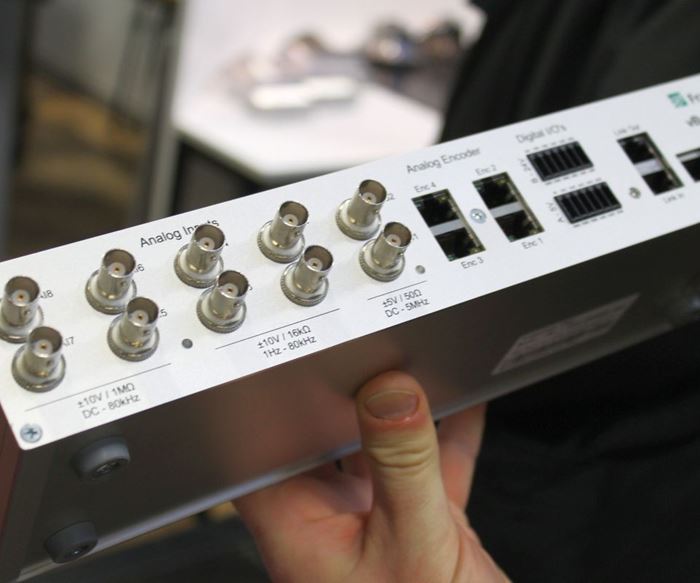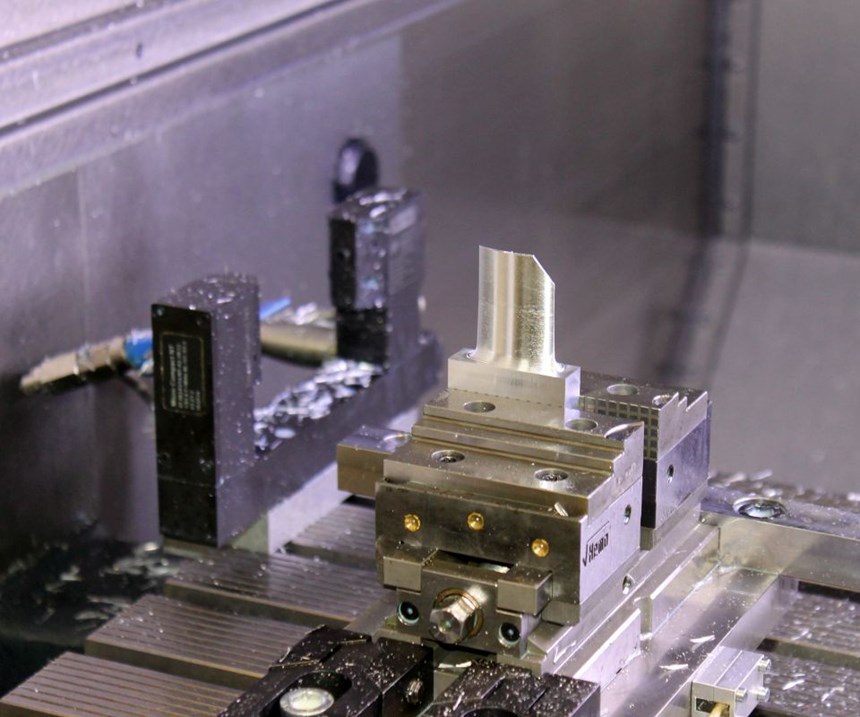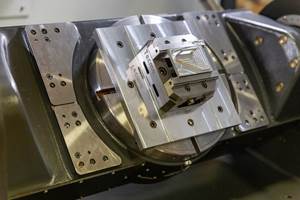Data-Driven Manufacturing: Retrofit Your Machines
The Fraunhofer Institute has developed a retrofit solution to upgrade production systems with network capability, enabling users of older machines to reap the benefits of data-driven manufacturing.
Many shops today have a variety of newer and older CNC machines, and while newer machines are often equipped with MTConnect- or OPC UA-compliant control units, many more were installed before these standards were adopted. As a result, these machines’ control units have limited data-generating capability. And while those that might only be four to five years old might have data-generating capability, they might lack the appropriate functionality to read-out all process-relevant data in real time to ensure an optimum machining process.
“The goal in an Industry 4.0-driven manufacturing environment is to be able to measure product quality in real time during the machining process,” says Matthias Brozio, Research Fellow at the Fraunhofer Institute for Production Technology IPT in Aachen, Germany. “Today, most machines offer restricted feedback options, such as online process information on temperature, forces, acceleration and structure-borne sound or mechanical vibration.”
However, Mr. Brozio explains that even 20-year-old machine tools can be used productively and with high precision in industries such as automotive and aerospace. “So the question is how to generate and read-out relevant process information to compensate (for example) for temperature variations during machining,” he says. “Sensor integration is not always easy as we are talking about high-frequency sensors and moving parts within the machining area. Moreover, in many applications, especially in the aerospace industry, you want to avoid re-clamping on external measurement equipment.
“Let’s take the example of turbine manufacturing for critical applications in aerospace or other industries,” Mr. Brozio continues. “Once you start machining, you want to be sure to have the perfect process for your part because the material is too expensive to produce scrap. If you can detect chatter while it happens, you can immediately react and correct your machining process. Furthermore, the more in-process documentation you have, the better for accreditation purposes in medical or aerospace applications.”
Mr. Brozio points out that while the requirements for sensor integration, control technology and networking have changed drastically over the years, older machine tools don’t have to be outdated and be replaced to comply with the requirements outlined above. This is why Fraunhofer developed the vBox, which offers an alternative to replacing existing machines. “The box uses data generated by both built-in as well as retrofitted sensors such as acoustic-emission sensors, acceleration, thermal and force sensors, which can be retrofitted by us,” he says. “Our vBox is a retrofit solution that comes with the necessary networking capabilities for real-time data exchange. The compact system can synchronize position data as well as digital inputs and outputs with sensor data. It also displays the data visually as required, regardless of the control technology used, completely in accordance with current industry standards.”
Machine data and information about force, body sound or acceleration are said to be transmitted in high quality and real time to uncover malfunctions in critical process phases. Moreover, it can be used to optimize a machining process immediately. “On this basis, companies are even able to plan maintenance measures in advance,” Mr. Brozio says.
For its test runs, Fraunhofer used a DMG MORI HSC 55, which might come as a bit of a surprise when talking about retrofits and “older” machine tools. The machine is by far not old, but even with the machine’s modern Heidenhain control, the interface does not enable the same data sampling rate as Fraunhofer’s vBox, Mr. Brozio says. He claims that the sampling rate is 1,000 times slower and does not offer a real-time interface to analyze data and react to events as they occur. Siemens interfaces are a bit faster, he says, but not as fast as the vBox.
Mr. Brozio says the vBox is still being tested in Aachen, but is available for shops interested in retrofitting their machines. Extensive test runs have shown that the vBox is suitable for monitoring during the start-up phase of a new series production as well as supervising production processes of high-quality items. Fraunhofer offers all necessary support to install one or several boxes.
“When completely integrated into existing manufacturing control systems, the vBox can contribute significantly to a transparent, data-driven production process,” Mr. Brozio concludes.
Related Content
Diving Deeper Into Machine Monitoring Data
Data visualization is the first step in using machine monitoring data, but taking it to the next level requires looking for trends within the data.
Read MoreShop Quotes Smarter, Works Harder with Machine Monitoring
Temco first installed MT-LINKi to optimize quoting. Now, the software helps the shop optimize its machines — and machine purchases.
Read MoreMachine Monitoring Boosts Aerospace Manufacturer's Utilization
Once it had a bird’s eye view of various data points across its shops, this aerospace manufacturer raised its utilization by 27% in nine months.
Read MoreFinally, A Comprehensive Software Solution Designed for Small Job Shops
Zel X from Siemens is an integrated software application that consolidates collaboration, design, manufacturing, and operations into a comprehensive, easy-to-use solution. From RFQ to delivery, it’s a more efficient way to handle quotes, manage jobs, make parts, and collaborate with teams of all sizes.
Read MoreRead Next
3 Mistakes That Cause CNC Programs to Fail
Despite enhancements to manufacturing technology, there are still issues today that can cause programs to fail. These failures can cause lost time, scrapped parts, damaged machines and even injured operators.
Read MoreThe Cut Scene: The Finer Details of Large-Format Machining
Small details and features can have an outsized impact on large parts, such as Barbco’s collapsible utility drill head.
Read More















.png;maxWidth=300;quality=90)















